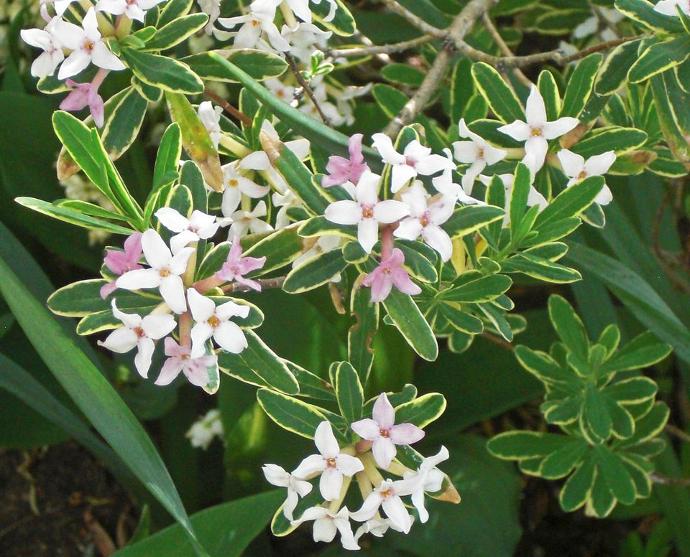Burkwood Daphne Plant
Burkwood Daphne (Daphne × burkwoodii) is a shrub that grows 3-4 ft tall, hardy in USDA Zones 5-8, prefers well-drained, fertile soil, full sun to part shade, medium moisture, not edible, and has medicinal uses.

Habit
Shrub
Height
1-1.5m
Growth
Slow to medium
Soil
Loamy, well-drained
Shade
Full sun to part shade
Moisture
Medium
Edible
No
Medicinal
Yes
Origin
Europe, Asia
Climatic Condition
Temperate
Temperature (°)
15-25°C
Humidity (%)
50-70%
Potting media
Organic compost
Fertilizers
5:10:10 NPK
Watering
Moderate
Plant Weight
500-700g
Flowering Time
Spring
Soil Ph level
6.0-7.0
Water Ph level
6.0-7.5
Soil EC
Low
Yield Per Plant
Ornamental
NPK ratio
5:10:10
life Span
Perennial
Health Benefits
Fragrant flowers
Suggested Grow Media or Potting Mix ?
50% loamy soil, 30% compost, 20% sand
Suggested Fertigation/Fertilizers
Fertilize every 6 weeks with a balanced, slow-release fertilizer.
Common Diseases and Remedies
Leaf Spot, Powdery Mildew, Root Rot ,Aphids, Scale Insects
Dark spots on leaves, White, powdery growth on leaves, Yellowing leaves, wilting, Distorted leaves, sticky residue, Sticky residue, sooty mold
Remove and destroy infected leaves, Neem oil, sulfur, Improve soil drainage, avoid overwatering, Neem oil, insecticidal soap, Horticultural oil, insecticidal soap
Fungicides with copper, Fungicides with myclobutanil, Fungicides with mefenoxam, Systemic insecticides (imidacloprid), Systemic insecticides (acephate)
HEALTH BENEFITS
Some Daphne species have been used in traditional medicine, but the plant is toxic if ingested.
A decoction is used in the treatment of backache, myalgia, skin diseases, poor vision etc.

